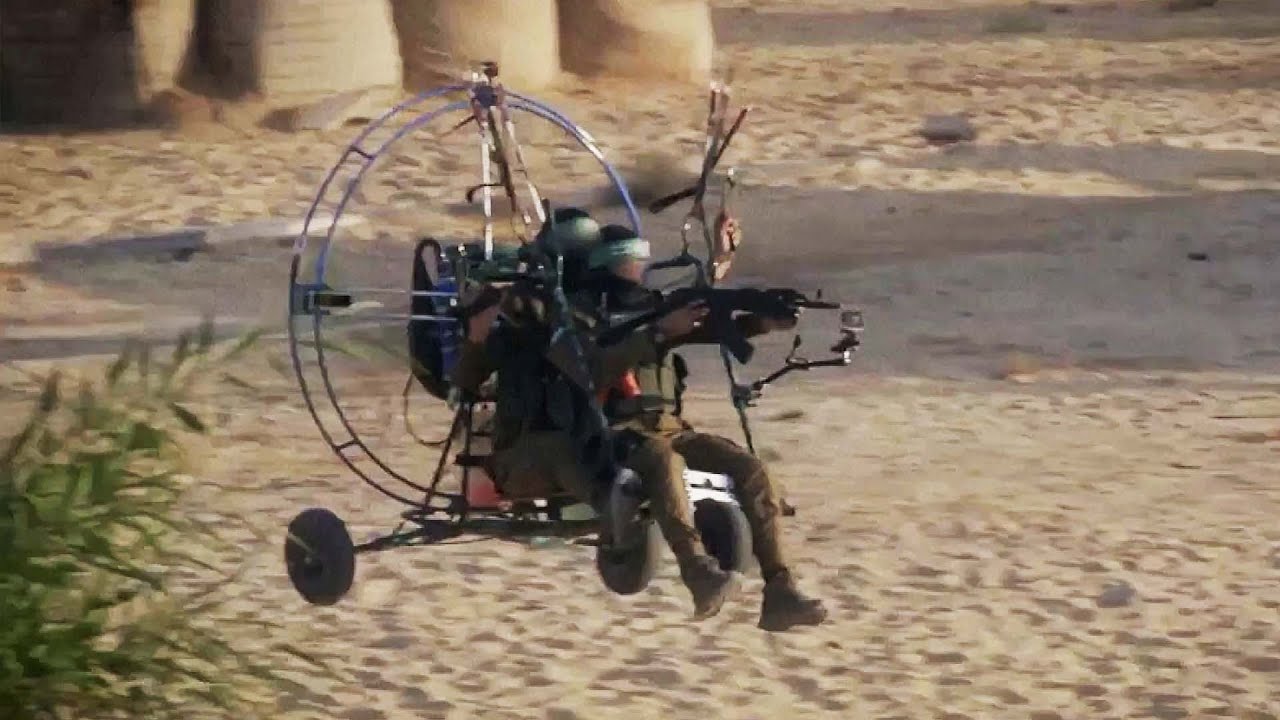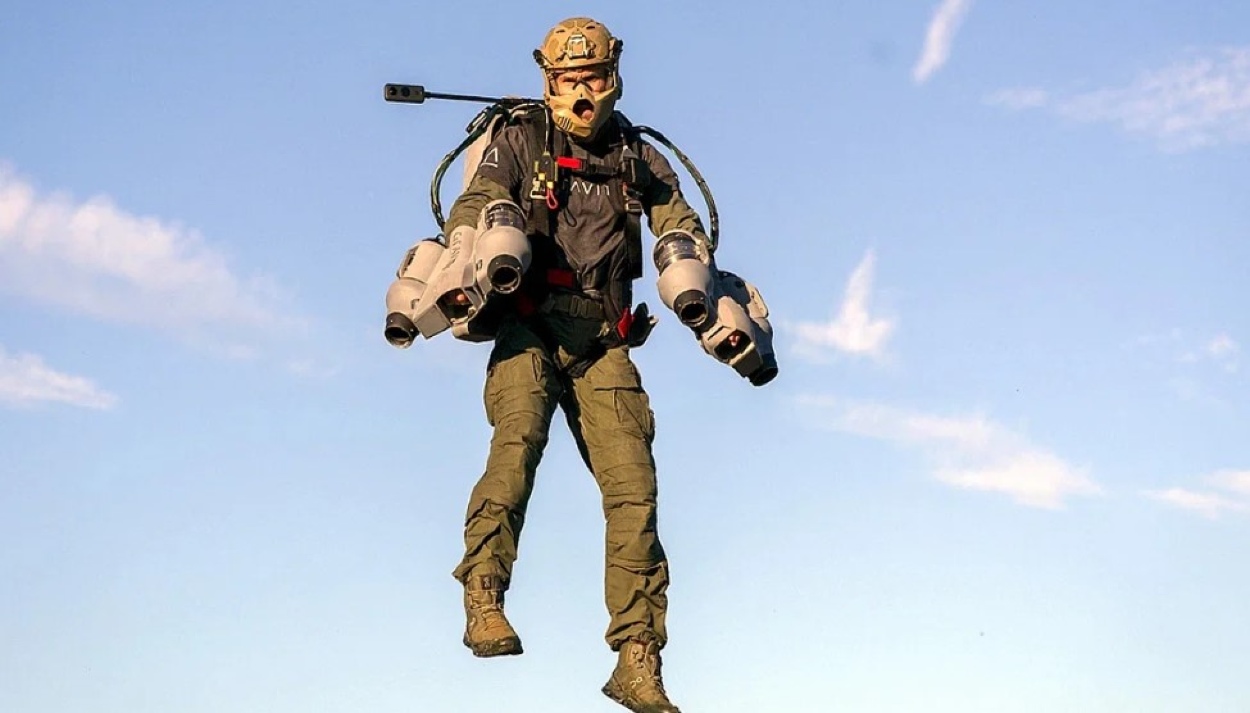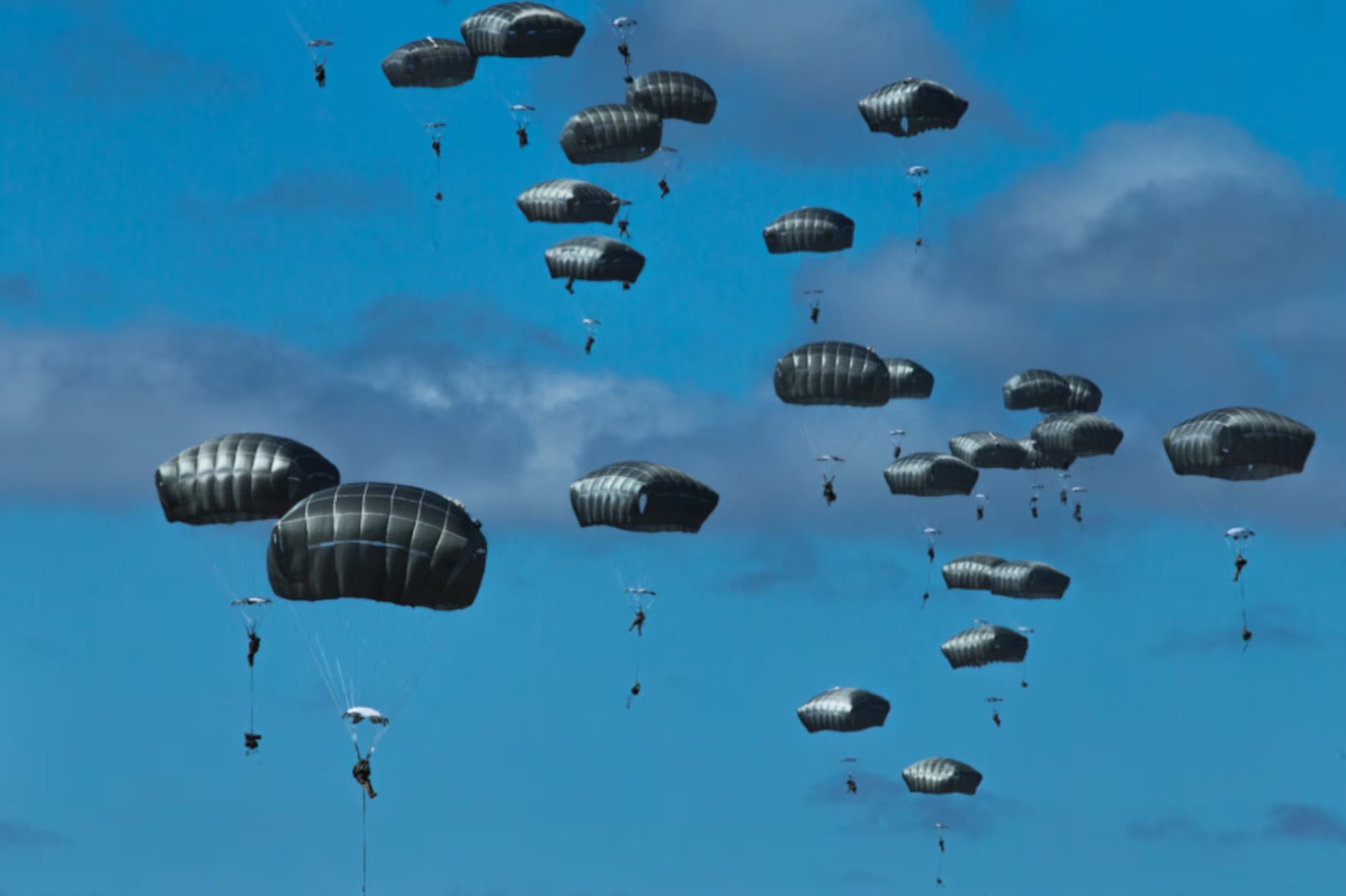Hamas terrorists used powered gliders to launch the devastating attack on 07 October 2023 at a music festival in Israel, which was organized close to the Gaza Strip.
It marked the first instance of powered gliders being used in such a heinous manner. Multiple factors might have played a role in driving the Falcon – the air wing of the Hamas terrorist group – to employ this unconventional weapon.
Meanwhile, the US armed forces are considering the possibility of US soldiers flying into combat using powered Paragliders or other personal air mobility (PAM) devices.
Powered Paragliders
Powered paragliding is a popular adventure sport. They typically cruise at speeds ranging from 24 to 80 km/h at altitudes of up to 18,000 feet (5,500 meters) or more, with specific permissions.
These lightweight machines weigh between 20 kg and 41 kg and are supported by the pilot during take-off. Their slow forward speed and soft wings make them ill-suited for high winds, turbulence, or intense thermal activity, especially for inexperienced pilots.
The Hamas Attack
The gliders’ ability to fly low and slow, their portability, minimal equipment use, low maintenance costs, few metal parts, and low radar cross section (RCS) made them an appealing choice for Hamas.
This combination allowed the terrorist group to elude radar systems and descend upon their targets swiftly. Flying at low heights and crossing the Gaza border fence, Hamas terrorists managed to evade Israel’s Iron Dome radar system as hundreds of gliders took off and landed in Israel within minutes on 07 October 2023.
With the ability to carry up to 15 liters of petrol and travel up to 100 kilometers, these gliders offered an affordable means for the attack and subsequent massacre. The entire operation, from assembly to take off, could be completed in a few minutes.
Also, training for powered gliders is not very complicated, and the pilot can be trained within a few weeks. The unprecedented attack against Israel caught the Israeli forces at their lowest state of alertness.
The multipronged assault, which involved ground, air, and water-based attacks, left the Israeli troops confused and unable to respond effectively. The scale and the defiance of the attack have brought powered gliding into focus as a military platform.

Personal Air Mobility
Powered paragliders are probably the simplest powered aircraft in existence. Invented in 1964 by Canadian parachutist and inventor Domina Jalbert, these single-person craft consist of a paraglider system with an attached motor with a gasoline or diesel engine.
Increasingly, so-called “para-motors” are being powered by electric batteries, though electric versions currently have far less range.
The Personnel Air Mobility System (PAMS) is being developed for a variety of missions. These missions include personnel logistics, urban augmented combat, CSAR, maritime interdiction, and Special Operations Force (SOF) infiltration and exfiltration.
A typical PAMS would allow mobility for a range of at least 5 km for a single operator, be assembled and deployed in less than 10 minutes, and not require assistance from external equipment.
These new systems will be capable of transporting individual warfighters weighing 150 to 400 pounds with the kit and arm hundreds of kilometers, reducing dependency on traditional aircraft platforms and extending the range available through traditional parachute infiltration systems.
The Pentagon has a long history of flirting with single-person flying machines. In the 1950s, the Army, Marines, and Air Force, flush with funding and eager to bring the Space Age to individual soldiers, tested no less than four single-person aircraft designs.
The Williams X-Jet used a turbojet engine to fly a single soldier at speeds of up to 60 miles an hour and an altitude of 10,000 feet. The de Lackner HZ-1 Aerocycle consisted of a single soldier precariously standing over a spinning set of rotors.
The Hiller Model 1031-A-1 Flying Platform used an equally dangerous ducted fan, while the Hiller YROE-1 Rotorcycle, twelve of which were built for the Marine Corps, looked like a stripped-down helicopter.
None of them worked particularly well, and many were quite dangerous. In military use, they all shared the same problems as paragliders, particularly the vulnerability to enemy fire.
All of the craft were relatively new or untested designs, some of which were quite dangerous and ultimately not a cost-effective way to move a draftee, soldier, or sailor around. While the Pentagon experimented with single-person aircraft up until the 1960s, none of the designs were bought in large numbers and made operational.
Yet, despite the elusiveness of success, single-person aircraft have been a Pentagon obsession for the better part of a century. Is the powered paraglider the answer? The Army aims to find out.
Jetpacks & Powered Wing-Suits
A jetpack is a device that uses jets or thrusters to propel the wearer through the air. It is worn like a backpack. The thrusters on the Jetpack suit are on different parts of the body, such as the arms, legs, and back.

The first working models were demonstrated in the 1960s. Russian Alexander Andreev conceived the idea for a jetpack in 1919, designing a rocket motor to be worn as a backpack.
Jetpacks are used in the military for a variety of purposes, including reconnaissance, special forces operations, search and rescue, and more. A Bengaluru-based company is developing a diesel-powered jetpack that can fly for up to 8 minutes and carry a payload of 80 kg.
Powered wingsuits, also referred to as “birdman suits,” use webbing-sleeved suits to add winged area to the flier’s body and generate increased lift. This allows extended air time by gliding flight rather than just free falling.
The modern wingsuit, first developed in the late 1990s, uses a pair of fabric membranes stretched flat between the arms and flanks/thighs to imitate an airfoil and often also between the legs to function as a tail and allow some aerial steering.
Like all skydiving disciplines, a wingsuit flight almost always ends by deploying a parachute, and so a wingsuit can be flown from any point that provides sufficient altitude for flight and parachute deployment – a drop aircraft. They are also called “squirrel suits” (from their resemblance to flying squirrels’) and “bat suits” (due to their resemblance to bat wings).
This wingsuit is powered by four mini-jet engines and has a manually controlled thrust vectoring nozzle. The four electric thrusters can generate flight speeds of over 280 km/h.
On 22 May 2017, British wingsuit pilot Fraser Corsan set a world record for the fastest speed reached in a wingsuit: 396.86 km/h. The highest altitude wingsuit jump is 13,183.70 m (43,253.6 ft).
The Guinness World Record for “greatest absolute distance flown in a wingsuit” is 32.094 km. Militaries are working out the use of these devices.
DARPA Program
The Defense Advanced Research Projects Agency (DARPA) has invited submissions of innovative research concepts in the technical domain(s) of the feasibility of the Portable PAMS. DARPA has offered to fund $1.5 million for viable proposals.
Systems may be air-deployed to allow infiltration into hostile territory or ground-deployed to allow greater off-road mobility without the use of existing Vertical Takeoff and landing aircraft such as helicopters and CV-22s. The platforms may be one-time use or reusable with minimal repacking/re-deployment actions to ensure they properly support the envisioned use cases.
Systems should be designed such that assembly and deployment can occur in less than 10 minutes using only simple tools or no tools at all. The platforms must not require assistance from external equipment or other unique environmental factors (e.g., wind, elevation, etc.) for launch/recovery.
Some examples of technologies of interest include jetpacks, powered gliders, powered wing-suits, and powered para-foils, which could leverage emerging electric propulsion technologies, hydrogen fuel cells, or conventional heavy fuel propulsion systems.
Of particular interest are systems that display low signature qualities inherent to their design, such as low auditory signature and low IR signature.
When deployed, the platform will be designed with simplified operations in mind so that someone unfamiliar with it can be educated in its safe and effective use with relatively little training.
Within the private sector, a large market exists for personal mobility systems for emergency first responders, including Police, search and rescue, and particularly time-critical ambulance response. Depending on the system, a wide variety of less critical use cases may emerge for commercialization, including urban mobility or recreation.
Down Side Of Paragliders
Paragliders do have significant downsides for military forces. They are slow and noisy and, coupled with a low-altitude flight profile, are sitting ducks to enemy air defenses.
This is a particular problem as armies become increasingly well-versed in the threat posed by drones, which make a similar buzzing noise. As a result, they are turning their attention—and guns—skyward.
There is no protection for the pilot from enemy fire other than personal body armor. Finally, paragliders are single-person craft, meaning each person riding in a paraglider is a pilot who requires his or her own aircraft. One hundred soldiers would require one hundred paragliders.
Operational Use Of PAMS
The PAMS are planned to be developed to support the airborne forces, address possible capability gaps, and provide unit personnel with air mobility to support freedom of movement.
Although they can carry just one person, a 400-pound weight capability means a 180-pound soldier and his 45-pound paraglider can transport up to 170 pounds of gear. Future battlefield threats are expected to require disbursed operations by small units in complex, contested environments.
Traditional fixed and rotary-wing transport aircraft may be unavailable for the movement of small teams due to supporting other missions and the difficulty of operating these vehicles in anti-access/area denial threat areas. One needs low-cost mobility solutions over extended ranges. PAMS will give the field commander flexibility in remote and austere locations.
A militarized powered paraglider is envisioned to provide both low-altitude (nap-of-the-earth and/or contour-level flight) capability to increase survivability and avoid detection by the enemy and higher-altitude (up to approximately 10,000 feet mean sea level) transit where possible given appropriate threat profile and mission parameters.
The PAMS will also support reconnaissance, surveillance, and troop movement at a much lower cost.

Way Ahead
Since World War II, paratroopers have trained to jump out of airplanes to seize critical locations. Once they’re on the ground, however, lacking trucks and infantry fighting vehicles of their own, they tend to be limited to walking as a means of transportation.
That could change soon the service is exploring powered paragliders as a means of battlefield transportation. They are seen as a useful solution in a future where “flying soldiers” will operate in smaller groups across wider areas.
The incident that put powered paragliders on the map was the October 7th, 2023, Hamas assault. They made a deep impression—especially as they flew over what was presumed to be a very secure border between Israel and the Gaza Strip.
Future battlefield threats are expected to require dispersed operations by small units in complex, contested environments. Traditional air assets, including fixed-wing and rotary-wing transport aircraft, will likely be unavailable for the movement of small teams due to supporting other missions and the difficulty of operating these vehicles in anti-access/area denial threat areas.
In May 2024, powered paragliders made an appearance at the annual Special Operations Forces Week Capabilities Demonstration in Tampa, Florida. At least seven commandos flying powered paragliders participated in the demonstration, flying in ahead of insertion by armed helicopters of the 160th Special Operations Aviation Regiment.
It is unclear how long U.S. Special Forces troops have been training with powered paragliders and how they would use them in a wartime scenario.
- Air Marshal Anil Chopra (Retired) is an Indian Air Force veteran fighter test pilot and former Director-General of the Center for Air Power Studies in New Delhi. He has been decorated with gallantry and distinguished service medals while serving in the IAF for 40 years.
- He tweets @Chopsyturvey
- Follow EurAsian Times on Google News




